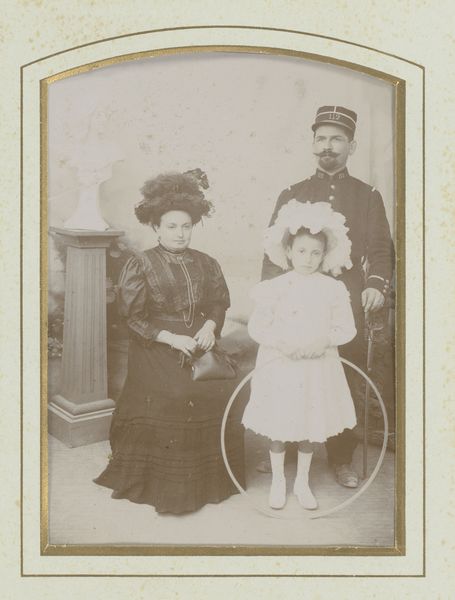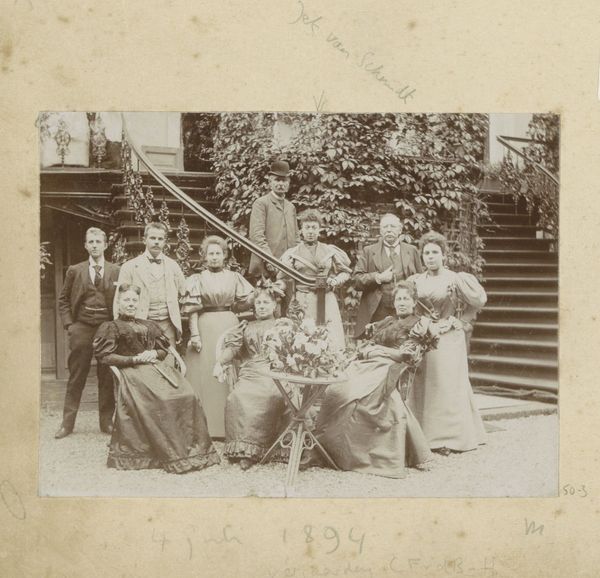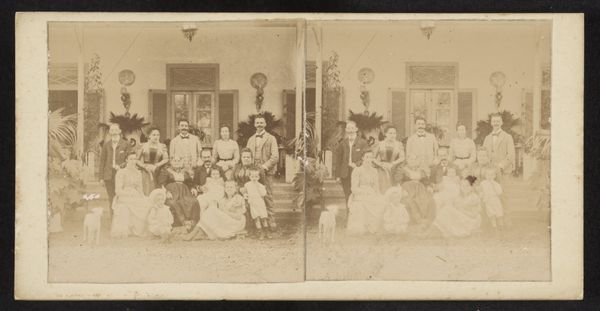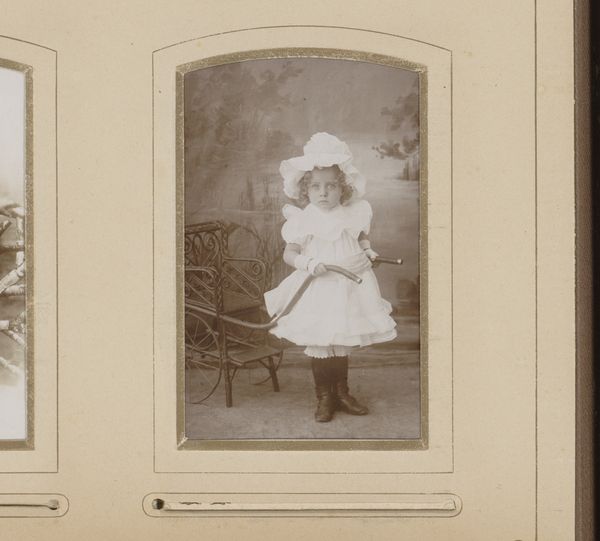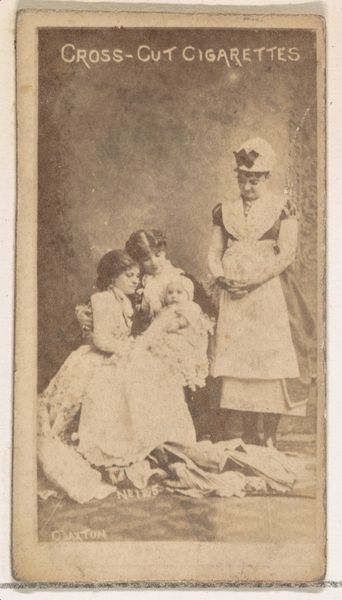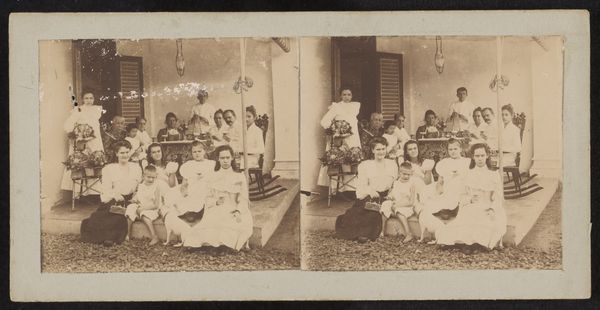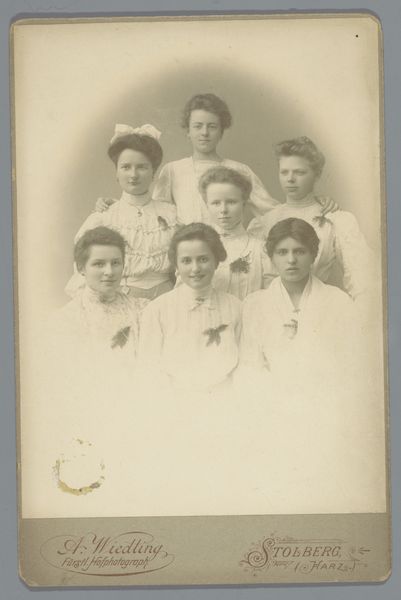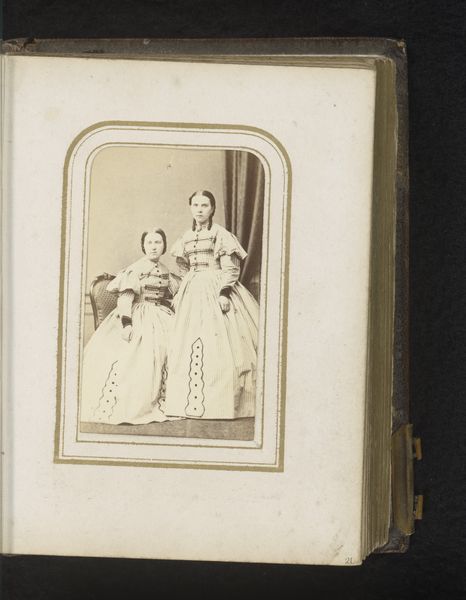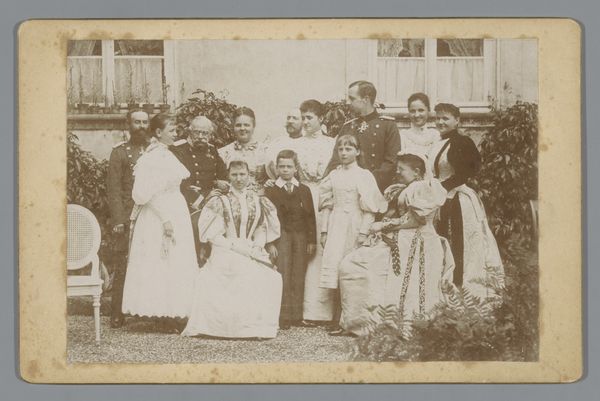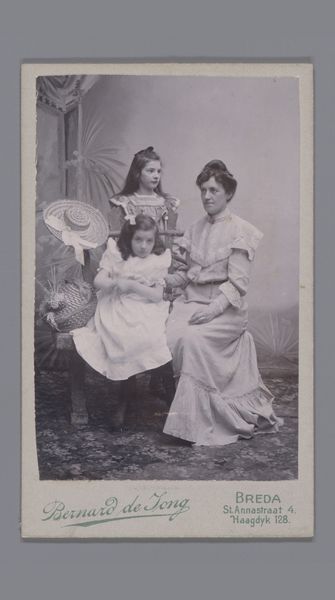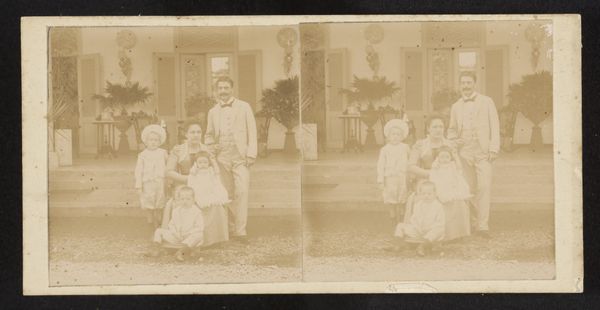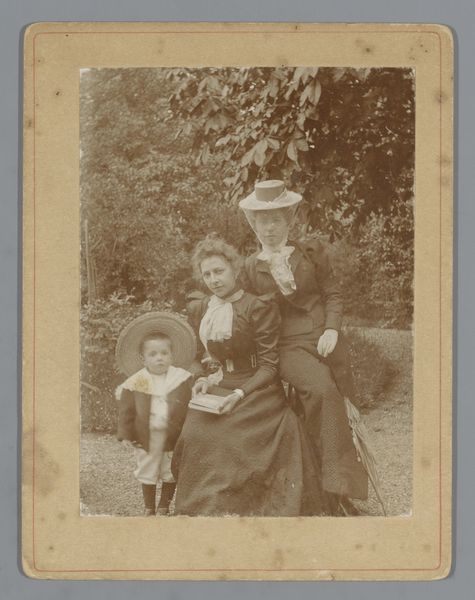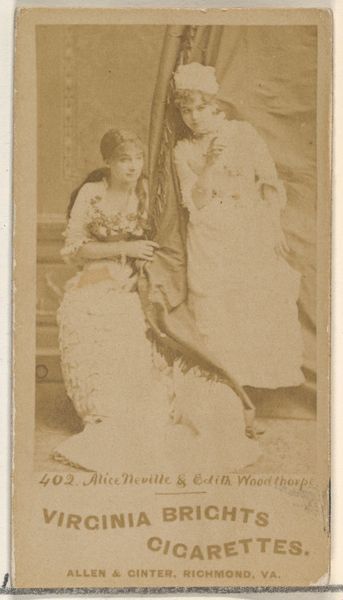
photography
#
portrait
#
pictorialism
#
photography
#
genre-painting
Dimensions: height 145 mm, width 96 mm
Copyright: Rijks Museum: Open Domain
Curator: This is "Groepsportret van meisjes in communiejurken," or "Group Portrait of Girls in Communion Dresses," a photograph created by Bernard de Jong sometime between 1892 and 1916. Editor: The immediate feeling is one of quiet solemnity. All those white dresses and the floral headpieces… it almost feels dreamlike, though the girls themselves look quite serious. Curator: De Jong employed a style we now recognize as Pictorialism, favoring soft focus and tonal effects that mimic painting. Observe the subtle gradations of light and shadow, the way the edges of the figures seem to dissolve into the background. It’s less about crisp detail and more about atmosphere. Editor: Absolutely. I’m intrigued by the staging – the draped fabric backdrop with those large moon shapes, the patterned rug. These are clear markers of status and wealth; it suggests a very specific cultural context, doesn't it? Communion was and remains a big deal. Curator: Precisely. And in photographic portraits of the time, such elaborate staging was common; to convey social standing and the importance of the occasion, particularly the religious symbolism implied by those clean white dresses as well as a child carrying what looks like a wooden cross in front. It served a didactic purpose, reinforcing social norms and ideals of innocence and purity, also of an almost ritualized aesthetic. Editor: I find myself wondering about each of these girls. Did they feel this was a joyous occasion? Or was this portrait more for the parents' benefit? And who decided their placement? What sort of message that placement communicates to its viewers, be they family or scholars in generations hence. Curator: A fair question. Consider, though, that these types of photographs were primarily vehicles for formal aesthetic and cultural expression. Meaning resides, in some part, in the surface appearances that De Jong cultivates: it's as if to highlight the inherent beauty in such staged events as these, irrespective of any emotional interiority felt by these young subjects at all. Editor: True enough, yet seeing the subjects— these children, posed so stiffly— I can’t help thinking about the lives behind the image, and the forces at play in how childhood and innocence are constructed. Curator: An interesting perspective! Considering the play of form and composition in this piece, it allows a new context in how social meaning operates visually and conceptually. Editor: And likewise, looking at this, in this formal context makes the humanity of these young people even more pronounced for me. Thank you!
Comments
No comments
Be the first to comment and join the conversation on the ultimate creative platform.
